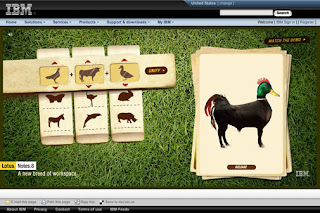And so it continues.
Total Petroleum is in the news again regarding the probabilities the world might be able to produce 100m b/d. Recall I wrote about Total's revision to its future production increases were down 20% to 4%. And how that 1% increase was miraculously beyond the reach of what the company could attain. Today the CEO Christophe de Margerie was commenting on the International Energy Agency's report that expects 103m b/d in 2030. De Margerie states the possibility is an;
...“optimistic” scenario - meaning output was unlikely to reach that level. By implication the IEA’s ‘reference’ or business-as-usual scenario, in which output is forecast to soar to 116 mb/d in 2030, is even more far-fetched.As CEO of one of the largest oil producers this is refreshing and candid honesty. The CEO goes on further to describe why he believes the world will not attain those production levels.
...that oil production was unlikely ever to reach that level not because of policy intervention, but due to a combination of geopolitics and geology.and
De Margerie said that the quality of oilfields now being exploited was worsening, and that this would restrict the rate at which oil could be produced. “Definitely we have been - all of us - too optimistic about the geology, not in terms of reserves, but in terms of how to develop those reserves, how much time it takes, how much realistically do you need.” There had also been a false assumption that North Sea-style recovery factors could be achieved everywhere, said de Margerie: “Not true; it doesn’t work”.and
Then came his own Rumsfeldian flourish: “But the fact that you don’t have the answer gives you the answer – ie. 100 [mb/d] is difficult because in the 100 you have already additional production in Iraq, you have additional production in Venezuela, you have additional production in Nigeria, you have additional production everywhere, and today we know those developments are not under way.”An explicit and clear set of comments that reflect on the dire nature of the energy situation. The honesty is welcomed and is joined this week with two other notable comments. Sadad al Huseini, former head of exploration and production at Saudi Aramco says that up to 300 billion barrels of oil reserves of the worlds remaining 1,200 billion barrels is not there. Something that Matthew Simmons has been saying for many years, and Daniel Yergin has flatly denied on many occasions.
Lastly in an interview with James Smith, Chairman of Shell UK on Sky News. Smith made a statement that shows the way in which the energy problem may be solved.
In answering the question of activities in oil and gas being more expensive from Jeff Randall, James Smith says "so technology, partnerships and a resiliant balance sheet are going to be very important for the future"Those that are interested are welcome to review this blogs archives and see how I think technology and partnerships (The Joint Operating Committee) can be employed innovatively in oil and gas.
Technorati Tags: Genesys, Peak-Oil, Call-to-Action, People


